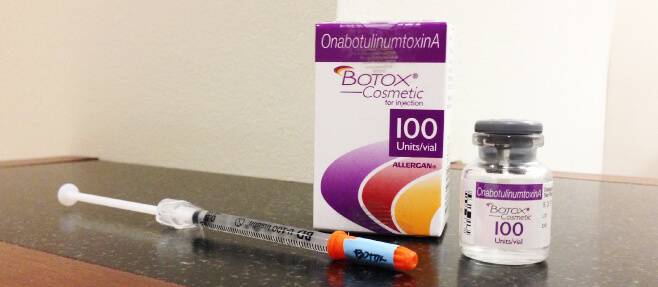Botox vs. Fillers: Which Is Better at Fighting Wrinkles?

Neurotoxins (such as Botox) and dermal fillers (such as Juvederm and Restylane) are sometimes discussed interchangeably as “injectables”, which are great non-surgical methods for treating fine lines and wrinkles. Indeed these treatments share some similarities: they have the power to create quick and dramatic results, with relatively no pain and no downtime.
Fillers and Botox, however, are very different in terms of how they work and which types and severity of wrinkles they treat.
Botox and Other Neurotoxins
There are several neuromodulators available for patients – the most popular being Botox, but there are also Dysport and Xeomin. Among various uses, these products are effective at eradicating wrinkles that stem from repeated facial expression including frown lines and crow’s feet. Using low doses of a purified protein, Botox and the other neurotoxins work by temporarily relaxing the underlying facial muscles that cause wrinkles when they contract. When properly injected, with these muscles relaxed, patients can smile, frown, or look surprised without the wrinkles and creases.
Dermal Fillers
Dermal fillers have become one of the most popular tools in the fight against aging. Today, there are many different kinds of dermal fillers, each with the ability to treat various signs of aging like volume loss, overly thin lips, and fine lines and wrinkles. Instead of relaxing facial muscles like Botox, dermal fillers work by adding temporary volume under the skin in order to fill wrinkles and plump the skin.
An Ounce of Prevention
While both fillers and Botox are effective in treating current wrinkles, they also have another great feature: preventing future aging. Patients who begin using an injectable at an earlier age can reduce their skin’s natural aging rate, preventing the need for surgical intervention (like facelift) in the future.
Safety
The best thing dermal fillers and Botox have in common is that they are extremely safe, with minimal side effects. According to a study published on JAMA Dermatology, serious negative side effects of injectables (such as severe bruising, lumpiness, or skin discoloration) occurred in less than 1 percent of cases analyzed. The results of the study are impressive: in total, only about 1 in 416 patients experienced negative side effects from their injectable treatment.
Long Lasting Results
The results of both Botox and fillers are temporary as each treatment naturally dissolves with the body’s metabolism over time. Botox typically lasts between 3-4 months, while dermal fillers can last anywhere from 6 months to 2 years depending on the specific filler used. It is possible, however, to maintain results for longer periods if the patient undergoes periodic “touch up” treatments.
Reversibility
Botox and fillers differ in terms of reversibility, that is the practice of using an antidote to undo results. Fillers like Juvederm and Restylane can be reversed using hyaluronidase if requested by the patient. While it’s not possible to immediately reverse Botox or other neurotoxins, effects are temporary and will fade over time on their own.
Botox + Fillers
It’s possible that the best course of treatment for your specific needs includes both Botox and dermal fillers. Since both treatments fight wrinkles in a different manner they are able to be used in combination during a single procedure. An experienced injector will be able to combine the facial muscle relaxation of Botox alongside the skin plumping effects of a filler to create the desired end result of their patient.

Interesting, I totally thought botox was a filler!?!?!?!? Shows how much I know 🙂
Botox + Fillers is even better 🙂